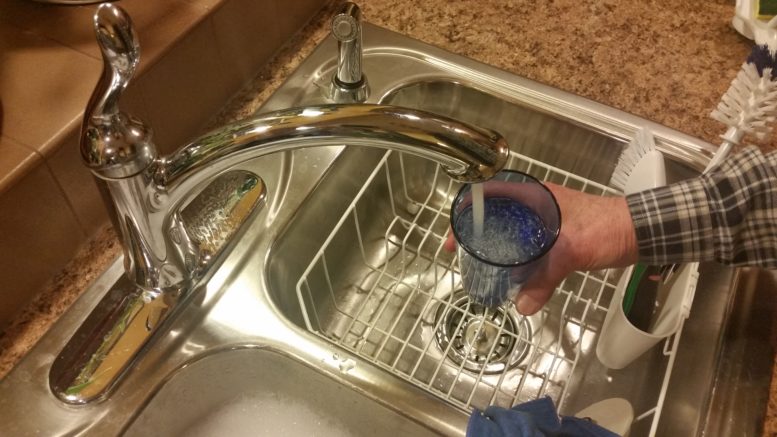By JAN LARSON McLAUGHLIN
BG Independent News
At least a couple homes in Bowling Green have been found with lead service lines bringing water into their faucets.
“I don’t want to scare anyone that we have a lead problem. We don’t,” Bowling Green Director of Public Utilities Brian O’Connell said to the Board of Public Utilities.
But as a water provider, the city of Bowling Green must submit a waterline map to the Ohio EPA, showing the type of lines supplying homes – copper, galvanized iron, plastic or lead. That map must be updated every five years.
To do that, the city inspects some lines that are on homeowners’ properties. Those inspections recently turned up a couple homes with lead lines.
O’Connell explained that the city is responsible for the portion of the waterline that extends to the curb stop, but the portion of the line going into the residence is the homeowner’s responsibility.
So while O’Connell is confident the lead lines in the city’s portion have been replaced, the same cannot be said of the portions that are the responsibility of homeowners.
If there is doubt, the utility crews are inspecting them.
“The sooner we get rid of those lead lines, the better,” O’Connell said.
Since 1967, the city service lines were all required to be copper or plastic. Prior to then, lead lines were allowed, but in the 1990s any known lead service lines were replaced.
Inside the customer’s residence, potential sources of lead could be lead pipes, lead solder, or lead in plumbing fixtures. Another potential source of lead is the water service line pipe that delivers water from the city water main to the customer’s residence. Over the years, different pipe materials have been used for water service line pipes such as lead, galvanized iron, copper, or plastic.
There is no lead present in the drinking water as it leaves the city’s water treatment plant. The city treats the water to reduce the potential for lead to contaminate the drinking water. This is achieved through a corrosion control treatment process and by adding orthophosphate to the water as a corrosion inhibitor.
The city of Bowling Green is responsible to maintain the water service line from the city water main to the curb stop valve. Typically, the curb stop valve is located near the curb, sidewalk, or right-of-way line on private property. The property owner is responsible to maintain the water service line from the curb stop valve to the building.
Ohio EPA has required all water suppliers to provide information to customers on the water service line material used to serve the customer. So the city created a map to inform customers on the water service line material that serves their property.
Bowling Green residents can zoom into their addresses to see what their waterlines are made of. To view the material used in your waterline, go the city website, then click on the link to the utilities department. From there, go to the water and sewer division, then click on water distribution. Under there will be a link to water service line material.
The electronic map shows a color-coded circle at each residence. Half of the circle shows the makeup of city’s waterline, the other half shows the makeup of the homeowner’s portion of the line. Green indicates non-lead, yellow means lead, and gray means unknown.
The information on the city website also explains to residents where they can locate their water meters, which provide good indicators of the waterline product. There is a link that shows how residents can tell if their pipes are galvanized iron, copper or lead by the color or by whether or not a magnet sticks to them.
If you are unsure about the pipe material serving your residence, contact the city’s Water Distribution Division or call your plumber.
“I’m not trying to scare anybody,” O’Connell said. However, the risks of lead in water can be significant and long-lasting, especially to young children. “It’s an important health concern.”
Homes built before 1998 may also have lead plumbing fixtures, since prior to then Ohio plumbing code allowed lead in fixtures. So several Bowling Green homes may be affected, since 83 percent of the city’s housing was constructed prior to 1998.
“There are no known lead service lines remaining,” O’Connell said. “But we have no record of what’s in the homes.”
If you have any questions regarding your water service line, contact the Water Distribution Division at 419-354-6277 or by email at watersewer@bgohio.org.

